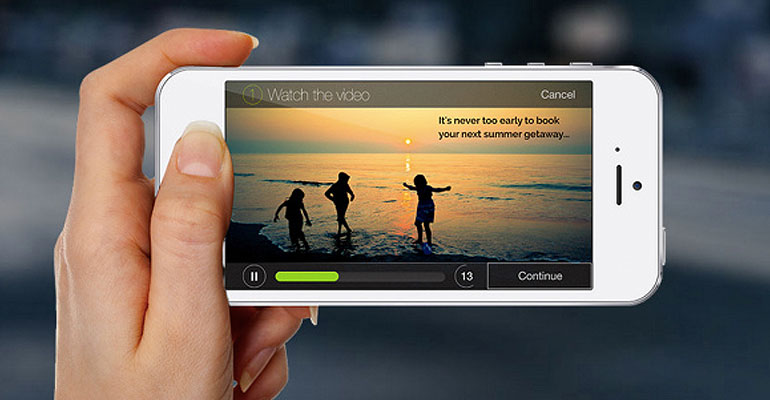
No one doubts the success of video as a marketing tool. But marketers are always on the hunt for the next frontier: vertical video.
For example, Snapchat has previously claimed vertical video ads have 9x as many completed views as horizontal video ads — which is surprising, considering the level of vitriol that characterizes many people’s reactions to vertical video.
Brands are beginning to invest significant sums in platforms that require vertical content, a state of affairs that is isn’t surprising, given that people are spending more time on their mobile phones.
In fact, 98% of people read with their phones in vertical mode. This makes vertical video ads perfect for mobile. They require no movement on the user’s behalf. They also take up the entire screen, so they have the user’s undivided attention, while solving the viewability issue for advertisers.
Because people use their phones vertically, for the most part, platforms and Web sites have had to think about the ways they display content, and optimize it for the mobile user.
For apps like Snapchat and musical.ly, which exist as mobile applications, users are only allowed to post vertical content, and any companies that wishes to post or advertise on the social networking app must adhere to that format.
Until recently, they were the only platforms where advertisers would deliberately use vertical videos — their popularity among millennials made them an irresistible target for brands’ advertising dollars.
But the launch of Instagram Stories, essentially a clone of Snapchat, has introduced millions of people to vertical video. This turn of events has not gone unnoticed by advertisers.
Despite all the hype about these platforms, brands have been slow to adopt vertical video. That’s because brands like to stick to what they know. At this point, most large brands are used to filming in horizontal — and the Hollywood studios and directors they hire are also more likely to use traditional shooting methods.
Companies are still trying to determine the best way to shoot vertical video, whether it’s filming in landscape mode and cropping, or shooting exclusively in portrait mode. There are also technical and logistical difficulties involved in shooting with traditional camera equipment.
Shooting vertical video doesn’t only create technical problems. It also requires editors and creative designers to rethink how they frame and compose shots. Ultimately, brands have been slow to accept that mobile platforms require different advertising strategies, and slow to allocate money to developing those strategies.
But adapt they must. In 2010, only 5% of view time on any device was in vertical view. By 2015, users were spending 29% of their viewing time in vertical mode — a pretty remarkable increase. This is in spite of the fact that some mobile platforms, such as Facebook and Twitter, still show video horizontally.
Facebook’s recent introduction of Snapchat-like stories on its mobile app can be seen as a move in a different direction.
If marketers want to reach their audience, they have to meet the needs of their consumers, they have to go to where the consumers are: hunched over on their mobile phones.
The goal for brands is always to create the most convenient, creative and engaging experience possible, and vertical video is becoming one of the best ways to do it.
–
